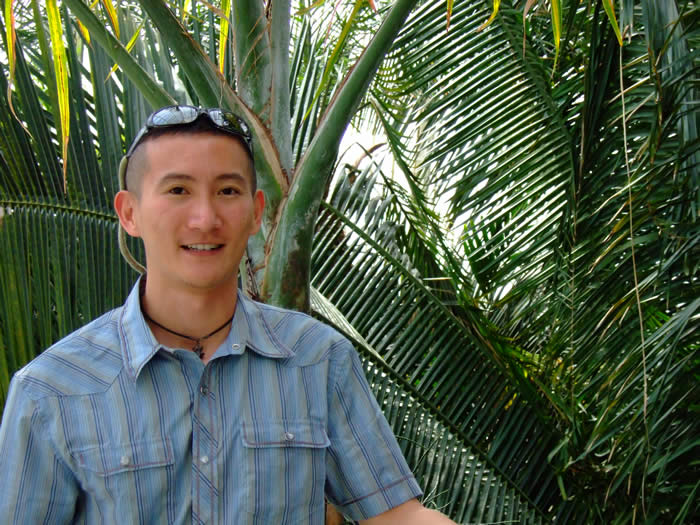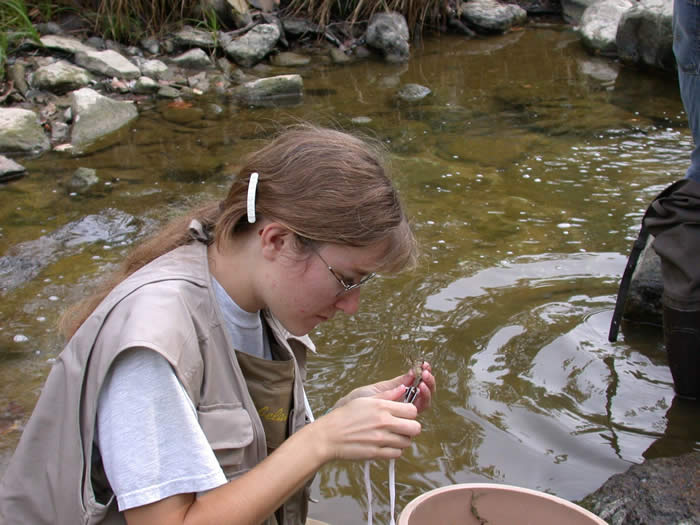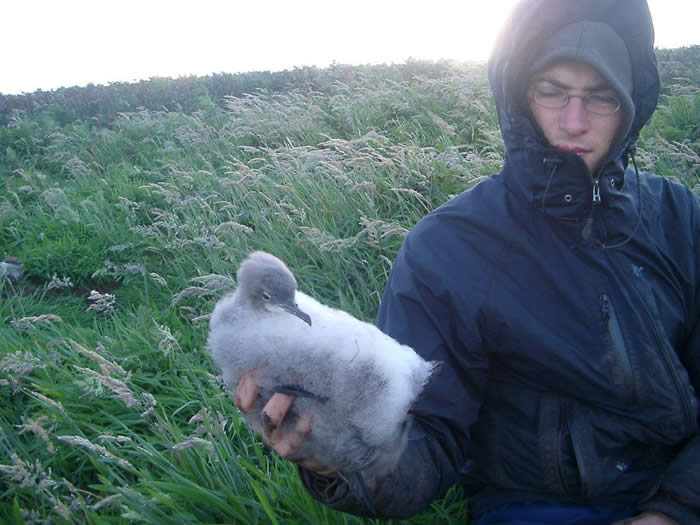
PhD Fellows
The PhD degree represents an internationally recognised standard of scientific training. Each PhD programme has been structured around: (i) formal courses; (ii) complementary skills development; (iii) individual training by supervisors; (iv) supervised research programmes. The University offers specific training courses in research techniques, experimental design, statistics and data analysis, research environment, use of IT and the business environment. The University’s Staff and Department Development Unit (SDDU) offers a wide range of additional training courses in communication skills, interpersonal skills and personal effectiveness. These are typically one-day courses involving direct practical skills training and interactive discussion. SDDU courses are available to all EST fellows and are will be integrated into the Fellow’s career development plan. All Masters-level modules and training courses are also available as components of the doctoral training programme. In this way, early stage researchers benefit from a broad research training and perspective, as well as detailed knowledge and high levels of skill in specific areas.
Audrey Zannese
Background: BSc, 2002 (Paul Sabatier, Toulouse & Dalhousie University), MSc, 2004 (Claude Bernard, Lyon)
Term of Fellowship: 01/10/2005 - 30/09/2009
Project Title: Influence of population size on population viability and genetic diversity.
Research highlights: The worldwide decline of many animal and plant species is attributed to two main causes: over-exploitation and habitat loss. It is therefore important to understand how these threats affect natural populations. We need to understand how populations subject to such threats are driven to extinction, and whether or not they can recover after they have been reduced to critically small population sizes. However, such questions are difficult to explore in natural habitats. We therefore undertook an experiment using a species of soil mite to investigate the effects of harvesting and resource depletion on population dynamics, with a special focus on extinction and recovery dynamics.One of our main findings is that all populations starved or subjected to resource depletion recovered to initial abundances. The harvested populations took longer to recover. The stage structure of the recovered populations was also slightly different. This finding shows that our experimental populations had the potential to recover after they had been reduced to very low population sizes. More work now is needed to understand what prevents some natural populations from recovering.
Chiara Polce
Background: BSc, 2001 (University of Insubria), MSc. 2004 (ITC, The Netherlands)
Term of Fellowship: 01/01/2006 - 31/12/2009
Project Title: Biodiversity impacts of invasive species at multiple spatial scales.
Research highlights: Species translocations characterize human history, but rapid movement of people and global trade have increased the rate at which species colonize new ranges. Introduced species are called “aliens” and there are many examples across all living organisms documenting that such introductions may negatively affect the native diversity. We test the hypothesis that the effects of alien species should vary across spatial scales, reducing species diversity at global and often local scales, but generally increasing diversity at regional scales. We use a combination of historical field data and maps, aerial photographs and novel sampling and analytical techniques, to analyse changes in the littoral vegetation communities in the Mediterranean basin. Our approach should help us gain insight into the spatial properties of alien plant invasions, thus allowing us to assess the extent and the severity of their threat to native species.
Kelvin Peh
 Background: BSc (Hon), 2000 (National University of Singapore), MSc, 2003 (Swedish University of Agricultural Sciences/Uppsala University)
Background: BSc (Hon), 2000 (National University of Singapore), MSc, 2003 (Swedish University of Agricultural Sciences/Uppsala University)
Term of Fellowship: content
Project Title: content
Research highlights: After conducting my PhD field work in Cameroon for at least 13 months, I returned back to Leeds in April 2008. For my work in Africa, I was investigating the relationship between tree species diversity and the various ecosystem functions (aboveground biomass production, litterfall production and leaf litter decomposition) of the tropical forests in Central Africa. I had completed my field work in Cameroon and collected good data for all my chapters within thetight time frame. In addition, I had accomplished an ornithological survey while I was working in Cameroon. After my return in Leeds, Iwrote an articlefor BioScience discussing how the nature conservation in Sub-Saharan Africa is being affected by the broader political and economic factors. Though this was not part of my PhD work, it has been very fulfilling to be able to discuss environmental issues with the social scientists and to understand the implications of politics and economics on the conservation and management of biological resources. Recently, I had attended a workshop at Oxford University to discuss the top ten questions for forestry. The results of the discussion will be compiled and published in a peer-reviewed journal. Since I had met the deadlines for all my past research projects and the results from most of these projects were published in international refereed journals, I expect the results from my PhD work to begin to be published later this year.
Camille Jan
Background: BSc, 2004 (Montpellier II University), MSc, 2005 (Pierre et Marie Curie: P6 University)
Term of Fellowship: 01/08/2006 - 31/07/2010
Project Title: Population ecology of swarming bats.
Research highlights : Temperate bat species spend the summer in isolated colonies and in late summer they disperse to mate and then to hibernate. About half of all European species mate at caves (or artificial underground sites), exhibiting a characteristic group chasing behaviour known as swarming. These mating sites attract large numbers of bats, from many summer colonies, in large catchment areas. This mating strategy is a major determinant of population structure. These mating sites may subsequently be used as hibernation sites. Swarming sites are ‘hot spots for gene flow’ and should be given protection priority in bat conservation. Our project is investigating how factors such as abundance and ecology influence the population structure of bat species that mate by swarming at underground sites. A multi-species comparison of the population structure of selected species caught at swarming sites across Europe is being used to test a number of hypotheses. This work will increase our understanding of the large scale ecology of a number of endangered bat species and will be used in the development of future conservation policy. The importance of swarming has already been recognised by UK and EU conservation agencies.
Emily Imhoff
 Background: BA, 2005 (Oberlin College)
Background: BA, 2005 (Oberlin College)
Term of Fellowship: 01/08/2006 - 31/07/2010
Project Title: Role of parasitism and water chemistry in a crayfish invasion.
Research highlights: In the past year I have concentrated on studying the mechanism of transmission and behavioural impacts of the microsporidian parasite Thelohania contejeani on the imperilled native white-clawed crayfish, Austropotamobius pallipes. Transmission of T. contejeani is not well-studied, it may occur via cannibalism, waterborne spores, or an intermediate host, or may be vertically transmitted. Similar parasites are known to cause behavioural modifications in their host which make the host more vulnerable to predation, which is an adaptation to allow the parasite to complete its life cycle in the predator. Thus far I have found no evidence of such changes present in crayfish, suggesting that T. contejeani may not rely on a predator species to complete its life cycle. I am screening as possible intermediate hosts a number of other species known to use streams that have high infection rates among the crayfish. I am also running a long-term transmission study to look for transmission to juvenile white-clawed and signal (Pacifastacus leniusculus) crayfish via circulating waterborne spores and cannibalism of infected crayfish tissue. Finally, screening of infected ovigerous females and their eggs suggests that vertical transmission, if it does occur, is rare.
Samuel Riou
 Background: DEUG, 2003 (University Blaise-Pascal Clermont-Ferrand), MSc, 2004 (Imperial College London)
Background: DEUG, 2003 (University Blaise-Pascal Clermont-Ferrand), MSc, 2004 (Imperial College London)
Term of Fellowship: 01/09/2006 - 31/08/2010
Project Title: Endocrine regulation of foraging and food provisioning in Manx shearwater.
Research highlights : Long-lived species need to ensure that the effort invested in one breeding attempt does not reduce the ability to breed in subsequent years. This can create conflict between chick and parent and also between parents. My work relates environmental variability (e.g. food availability) to the behavioural mechanisms that both parent and chick use to regulate food provisioning, and thus growth and fledging of the chick. This work also focuses on the hormonal mechanisms that are involved in promoting these behavioural responses. Manx shearwaters enable us to investigate these strategies in the context of juvenile obesity, since their chicks reach 130/150% of adult mass during development. They then loose mass for 2 weeks before leaving the burrow. The evolution of such a growth/food provisioning pattern is poorly understood, notably because chicks of some Procellariform species metabolise a substantial part of these fat reserves prior to fledging whereas others do not. In the contemporary context of environmental change and fish stock depletion, it is of importance to understand how animals can regulate different aspects of their life-histories to face environmental challenges, to be able to predict how they may or not react to future challenges they will face

